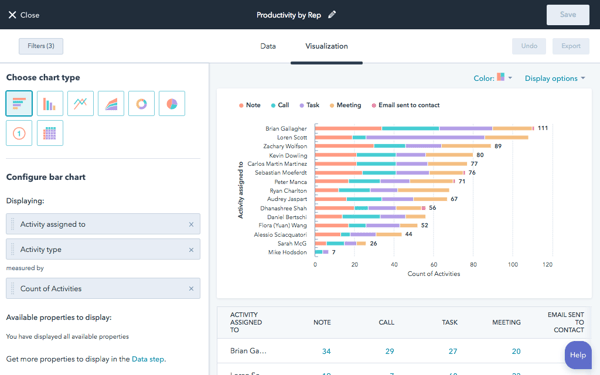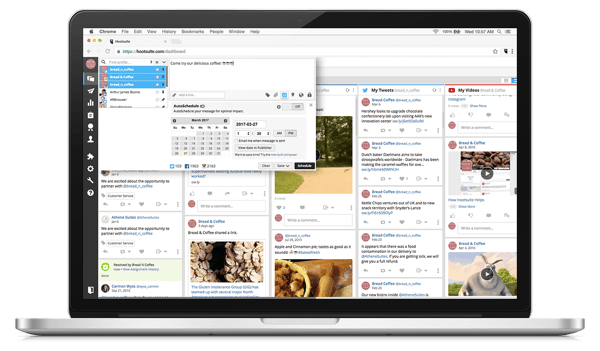The Marketer's Toolkit to Calculating ROI
While working for over a decade with a variety of businesses and organizations, the most frequent breakdown we’ve heard from our clients is how to accurately measure the ROI of their digital marketing efforts.
The results are not simply just the Return On Investment in the terms of dollars and cents, but expand beyond into the experience - the qualitative metrics we can’t determine by a traditional mathematical formula.
This isn’t to say that the quantitative side of ROI is irrelevant - it very much runs the business with customer conversions, lead generation, and revenue attribution. What we are looking at is how the marketing machine operates as a holistic model that aligns with your sales efforts as a whole.
For our team at Chirp, we wanted the opportunity to give a birds eye view of the entirety of a sales funnel and share what we’ve learned from our past mistakes and successes that has helped us determine the multiple tiers that ROI takes shape inside of marketing strategies.
So we decided to throw together The Marketer’s Toolkit to Calculating ROI to support marketers, business owners, and the analytical masterminds alike with a framework you can refer to to evaluate all your inputs - quantitative and qualitative.
How to Measure the ROI of Your Online Marketing
A great place to start is to recognize the two halves of the equation - your brand’s business performance and your brand’s brand awareness
The Different Types of Measures Inside of ROI
Every campaign you run will have a different set of Key Performance Indicators (KPIs), or results, that help you determine your overall Return On Investment.
If you’re using Paid Advertising and Promotion tactics, these formulas are typically more simplified and have a clearer line of sight to evaluate the success of a campaign.
Our friends at HubSpot have laid out the traditional formula to calculating Marketing ROI as:
| [((number of leads x lead-to-customer rate x average sales price) - cost or ad spend) ÷ cost or ad spend] x 100. |
Business Performance
For business performance, these are likely the more common quantitative KPIs your brand may be familiar with already, such as:
- Number of Sales
- Number of New Customers
- Conversion Rates
Brands can count on these measurements to evaluate their marketing efforts on a much more granular level and pivot their strategy based on the numeric data they uncover.
Brand Awareness
Looking inside of brand awareness, there is a shift on how we calculate Return On Investment for a brand and it typically is measured through a spectrum of qualitative KPIs.
These measures are often tied with more content specific tactics utilized in your marketing efforts such as:
- Total Reach
- Engagement Rates
- Number of Positive Reviews
We like to play with the concept that inside of brand awareness, we are often measuring the overall Return On Engagement of our customers. These factors attribute to overall search visibility, customer loyalty, and brand advocacy.
Next we want to look at where these measurements take place and what role they play in your marketing efforts.
Attribution Models
To summarize, an attribution model is a method for attributing conversions to marketing channels.
For our toolkit, we chose to focus on the channels of each overarching attribution models, Sales and Marketing, which ultimately impact a brand’s Return on Investment. Each of these contribute to different touch points in the Buying Journey.
Sales
When we talk about sales, brands can quantify the total number of dollar-centric results it takes to sustain and scale their business.
A few examples of channels inside of sales include:
- Sales Acquisition Software
- Pay-Per-Click Advertising Platforms
- Disruptive Advertising Tools
Marketing
Shifting our focus to marketing, brands can utilize marketing channels to increase their reach and guide customers along the Sales Funnel.
A few examples of channels inside of marketing include:
- Customer Relationship Management Software
- Social Media Management Platforms
- Email Marketing Software
What Tools Are Available to Make Measuring Your ROI Simpler
Once you have an understanding of what to look for in determining your ROI and which model your tactics attribute to, you can start to discover what tools can simplify the process.
Here are a few of our favourite tried and tested tools that we use with our clients to help determine what metrics matter most and where they attribute to.
Google Analytics
Whether you run an e-commerce website, or simply utilize your website to drive traffic and capture leads, Google Analytics is one of the most valuable free tools you can harness to track conversions.

From the dashboard, you can access an overview of your website’s visitors and traffic, monitor user behaviour, channel acquisition, audience information, and even create Conversion Goal Tracking to monitor campaign specific sales.
Google Analytics also works through integration with Google Ads, one of the more popular pay-per-click tools available online.
HubSpot
A little biased we know, but as a Gold-Tier Agency Partner, we have seen the wonders of HubSpot first hand as we began to grow our business. HubSpot is an all-in-one Inbound Marketing, Sales and Service Software.
The great part of using HubSpot is that you can monitor many of your sales and marketing initiatives all in one place and even do it for free.

HubSpot offers a number of integrations and extensions that can connect with your business’ current software and platforms to aggregate data so you have ease of reporting.
For larger organizations, the HubSpot Marketing Entreprise Hub takes it one step further to with a multifaceted resource for revenue attribution based on your customer interactions.
DataBox
DataBox is one of our favourite softwares to use when we are trying aggregate data from multiple channels. Rather than having to jump from each platform to grab reporting on your campaign goals, you can simply build out custom reporting templates through integration.

The dashboard is very user-friendly for non-marketers and offers a variety of filters to set specific timelines and even receive notifications as you approach your goal deadline.
For e-commerce clients, we have found DataBox extremely useful as it integrates with popular platforms such as Shopify and WooCommerce. And if you’re just getting started, DataBox is available for free until you begin to scale.
Hootsuite
Just one of many social media management tools marketers use, Hootsuite makes social analytics easy to understand your social metrics. For a monthly fee, you can gain access to a full overview of all your social channels activity including your Follower Count, Post Activity, Engagement Totals and Post Sentiment.

We found Hootsuite is valuable for bridging the connection with more qualitative goals and engagement centric metrics. The platform is intuitive to use and comes with a tutorial feature to get familiarized with all the features.
Inside the reporting tab, you can export a number of different reports from a Mixed Overview to individual social channels so can determine each social platforms attribution to your overarching goals.
Why Understanding ROI Is Critical to Making Informed Marketing Decisions
The most important factor to using the tools suggested above requires an understanding of your requirements. What do you need to track in order to understand your ROI?
Knowing the right metrics to use is far more important than the tool you use to report it. And if you don’t know your metrics, you won’t know how to measure it.
HubSpot found that 39% of marketers have stated that proving ROI is one of their biggest marketing challenges.
When you’re part of a smaller organization or team, someone on your team will likely have to take on the role of reporting.
The main focus you will want to take on is finding a place where you can understand your baselines at the end of the day - knowing your numbers to date is probably the most important weapon in your marketing and sales personals.
Start somewhere because the cost of inaction can add up to thousands of marketing dollars spent on the wrong tool or tactic that impacts your bottomline.
We recommend trying out some of our favourite tools above like HubSpot or DataBox to start to aggregate your data in one place. Let us know what tools you find useful or if you have suggestions of additional resources that have made a difference for your business.

Article by Alison Masniuk
Alison Masniuk is a Digital Content and Communications specialist based in Calgary, Alberta. Alison is passionate about social media and technology, always looking how to communicate a brand's story through original content and strategy right from ideation to execution. She has a professional background in Human Resource Management, Public Relations, and Digital Marketing.




